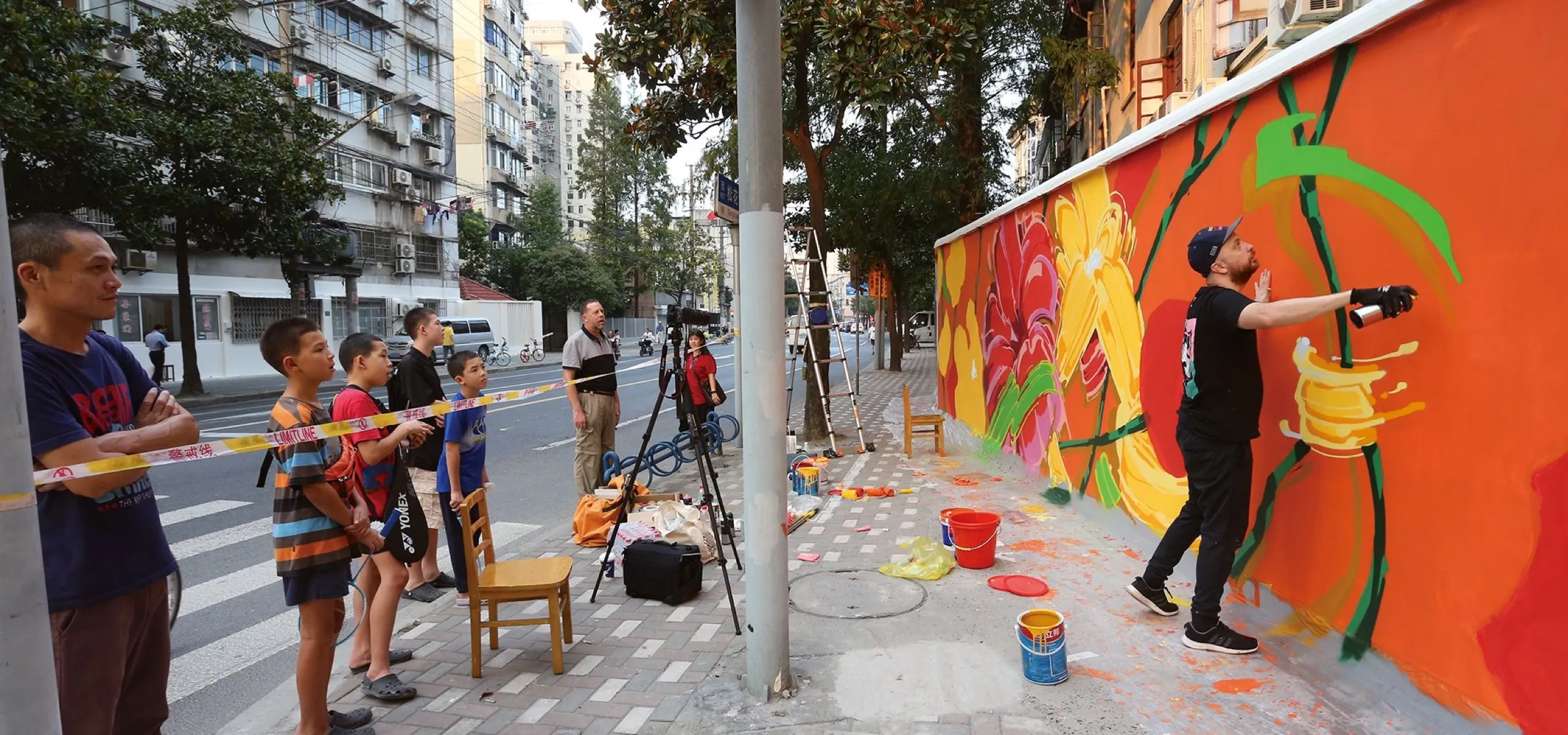With artists enjoying lucrative commissions from governments and brands, and attracting millions of followers online, some are asking whether China’s graffiti art has forgotten its counter-cultural roots
Throughout Chengdu, the rainy capital of southwest China’s Sichuan province, the word “DENS” reigns supreme in the world of underground graffiti.
It’s a signature (known as a “tag” in the street art world) found across the city: under bridges, in back alleyways, on top of billboards. Yet the man behind the moniker is no masked marauder: His real name is Peng Dengke, and anyone who wants to can find him behind the counter at Still Writin’, the graffiti shop he co-owns, where artists can buy the spray cans that fuel much of the graffiti culture of the region. “Actually, the space is government-related,” he says, as he shows TWOC round the shop, smiling. “They’re really supportive of what we do.”
This is an understatement. In many ways, Still Writin’ only exists because of the tacit support of the local government, which has partnered with a private company to transform the neighborhood around the shop into a “culture district” called Red Star. As one of the businesses within Red Star, Still Writin’ is expected to frequently host events and draw visitors. “They want to mainly use it to attract people to the area and make the city cooler,” Dens says.
This isn’t just a Chengdu phenomenon. In order to beautify their communities, local administrators from Xi’an in the northwest to Hunan in the central-south have partnered with street artists to transform graffiti from a once-niche, underground hobby practiced by a select few into a full-blown business. But by partnering with the establishment, elements that attracted some to the subculture are slowly disappearing.
In many countries, graffiti is akin to vandalism, a serious crime worthy of prison time and high fines. In 2010, a Swiss national named Oliver Fricker was caught doing graffiti at a train station in Singapore, and was subjected to physical caning and jail time. In the US, to prevent youths from even engaging in graffiti, most major cities store their spray cans in cages, and you have to be at least 18 years old to purchase them. But in China, Dens often sells to high school students.
Written on the Walls: How Graffiti in China Went Mainstream is a story from our issue, “Lessons For Life.” To read the entire issue, become a subscriber and receive the full magazine.













